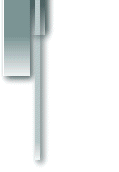
This month's lesson is intended to be a very basic overview - glossary, really - of various ethnic rhythms, particularly latin rhythms. The first problem I ran into in putting this lesson together was the fact that there isn't one central repository on the web where these rhythms are clearly spelled out. So I had to go to a number of sites and "collect" them, as one would collect bugs in a field. One here, a couple over there....
I very quickly discovered that not only is there not one central "Ethnic Rhythm" site - particularly where latin rhythms are concerned - but that there is also a difference of opinion on exactly what these rhythms are and even how they are notated!
So, for some of you these rhythms may look a bit different than you're used to seeing, or they may even appear wrong. This lesson isn't intended to be a "final word" on latin rhythms - far from it! It's basically a starting point in your studies of ethnic rhythms. I highly encourage further study of these rhythms if you are even remotely interested in pursuing them.
Another thing needs to be said here. Many of these rhythms are not "stand-alone" rhythms. In other words, many of the patterns below are intended to be played by one instrument (like a cowbell) in the framework of an overall ethnic rhythm where other instruments layer other patterns to create the whole rhythm. The next lesson - Ethnic Rhythms #2 - will explain how this works.
![]()
![]()
I'm not going to pretend I understand the genesis of the rhythms below, nor do I understand the cultural significance they embody in their home culture. Someone else with more knowledge than I is going to have to take that up.
These rhythms can add color and zestiness to your playing. You may even be in a situation where your band leader requires you to play a Mambo. Do you know what that is? It's good to have a basic understanding of these rhythms - it will make you more versatile and give your playing a stylistic boost.
![]()
![]()
I'm not going to go into a whole lot of detail in explaining what's happening here - this is basically a glossary. I will notate when there are some certain conditions and instruments that are characteristic of a particular pattern, but everything should be faily self-explanatory.
Ethnic Rhythms #1 - Cláve 3/2

This is probably the most basic rhythm is all of latin music. The 3/2 designation comes from the way the measure is juxtaposed. Here's the 2/3 Cláve - you see what I mean:
Ethnic Rhythms #2 - Cláve 2/3

This rhythm is usually played on the claves! Sometimes the cowbell (it's become popular to have a foot pedal hooked up to a cowbell, playing the cláve rhythm with the left foot while playing over "top" of this on a kit or congas). The Cláve is also sometimes called the "Cinquillo".
The most important concept of the Cláve is tension / release. Build the tension in the 3, release it in the 2:

The Cláve 3/2 is sometimes called the Rhumba Cláve.
Ethnic Rhythms #3 - Bossa Nova

A clave variant.
Ethnic Rhythms #4 - Songo

This pattern is played with the whole kit, plus a cowbell.
Ethnic Rhythms #5 - Baiao

This pattern is played on the bass drum, usually "under" other patterns to make an overall "rhythm." You'll see how this works in the next lesson.
Ethnic Rhythms #6 - Mozambique

Another cowbell pattern. Note there are two measures - you can "flip" this pattern like the Cláve (3/2 - 2/3). I didn't notate it - how would it look? Write it out....
Here's the Mozambique played on the top line on the cowbell with snare, bass drum, and foot hi-hat together:

Ethnic Rhythms #7 - Afoxe

I couldn't find any notes on instrumentation on this - I'm assuming the top line is either closed hats or cowbell, the middle line is side stick, the bottom bass drum.
Ethnic Rhythms #8 - Samba

Extremely popular rhythm. You should memorize it. Here's a variant played on one instrument:
Ethnic Rhythms #9 - Samba Cruzado

This is also a Bossa Nova variant.
Ethnic Rhythms #10 - Soca

Ethnic Rhythms #11 - Cascara

This pattern has a notation variant:

Another variant:

Ethnic Rhythms #12 - Partido Alto

Ethnic Rhythms #13 - Agbekor (Bell Rhythm)

This rhythm is played on the Agago Bells.
Ethnic Rhythms #14 - Maracatu

Here's a variant on this pattern:

Ethnic Rhythms #15 - Mambo

Ethnic Rhythms #16 - Palito

My source on this pattern says it is played on a "gua-gua". Anybody know what this is? I don't!
![]()
![]()
Have some fun with these! Add them to your pallette and "mix them up" with other lessons during practice time (eg., play a Palito with the left hand on the snare while playing the right hand of a Paradiddle on the ride cymbal, with a Baiao on the bass drum and eighth notes on the hi-hat with your foot). Drive yourself crazy!
As always, let me know how you've done!
![]()
![]()
![]()
